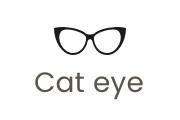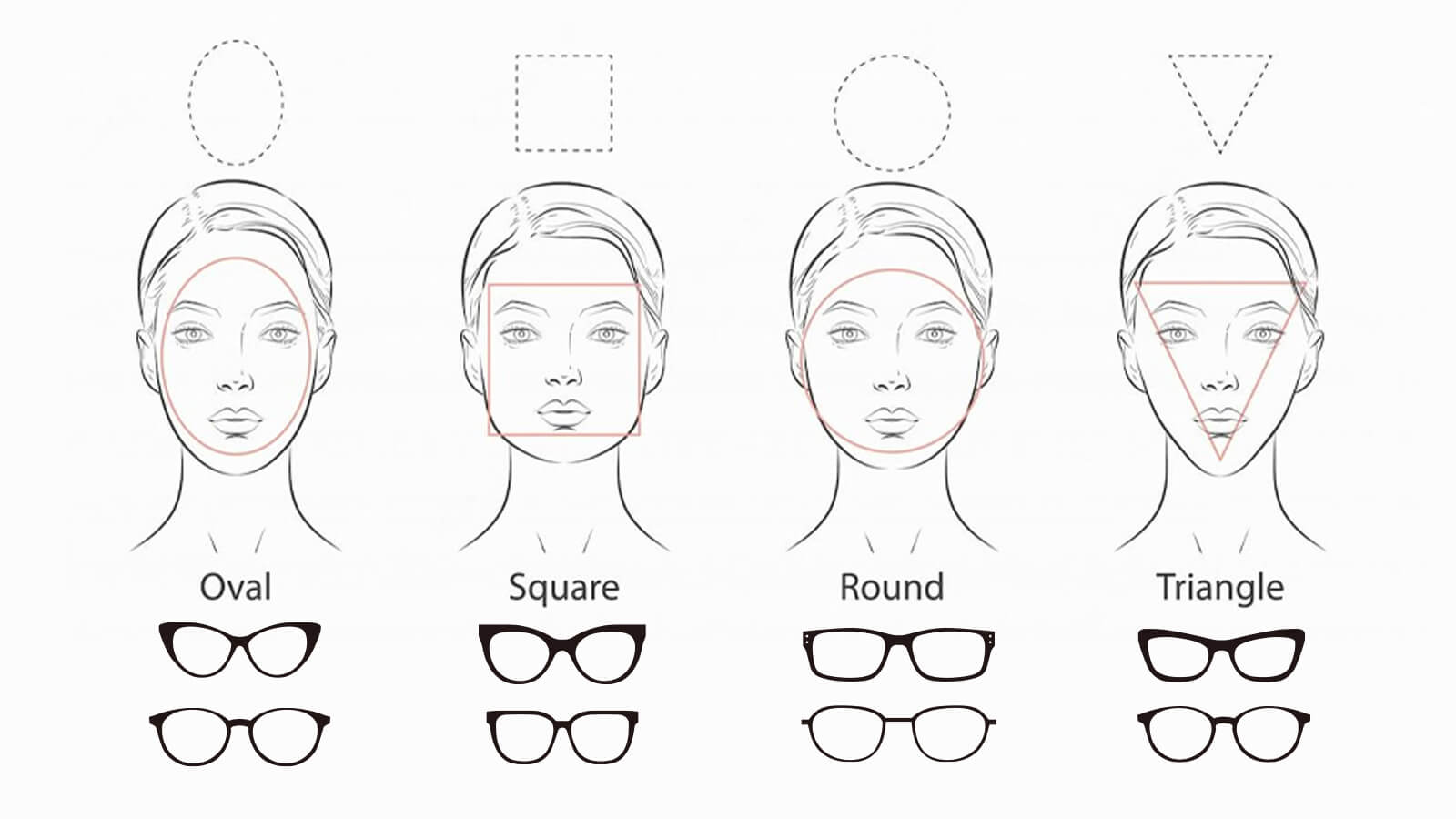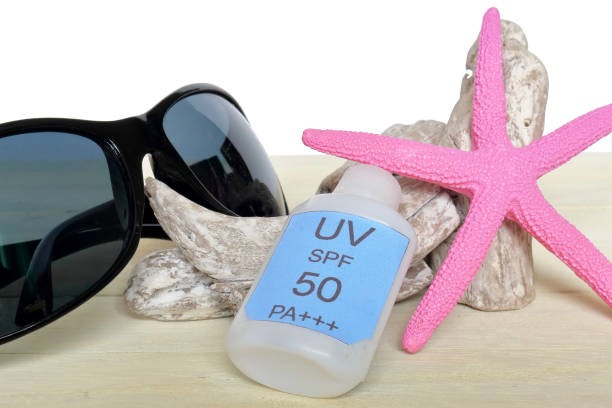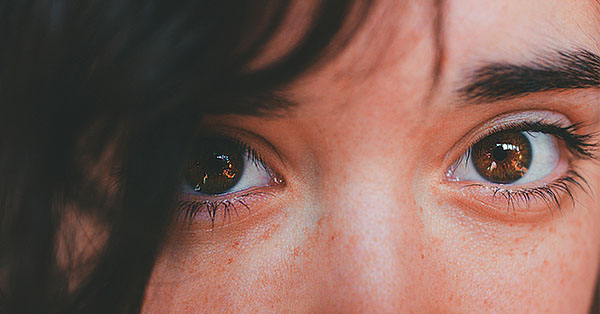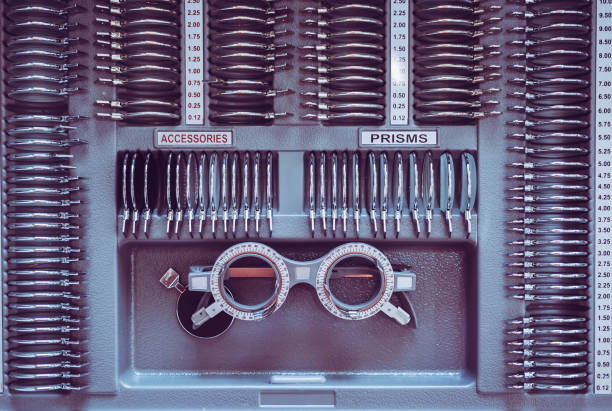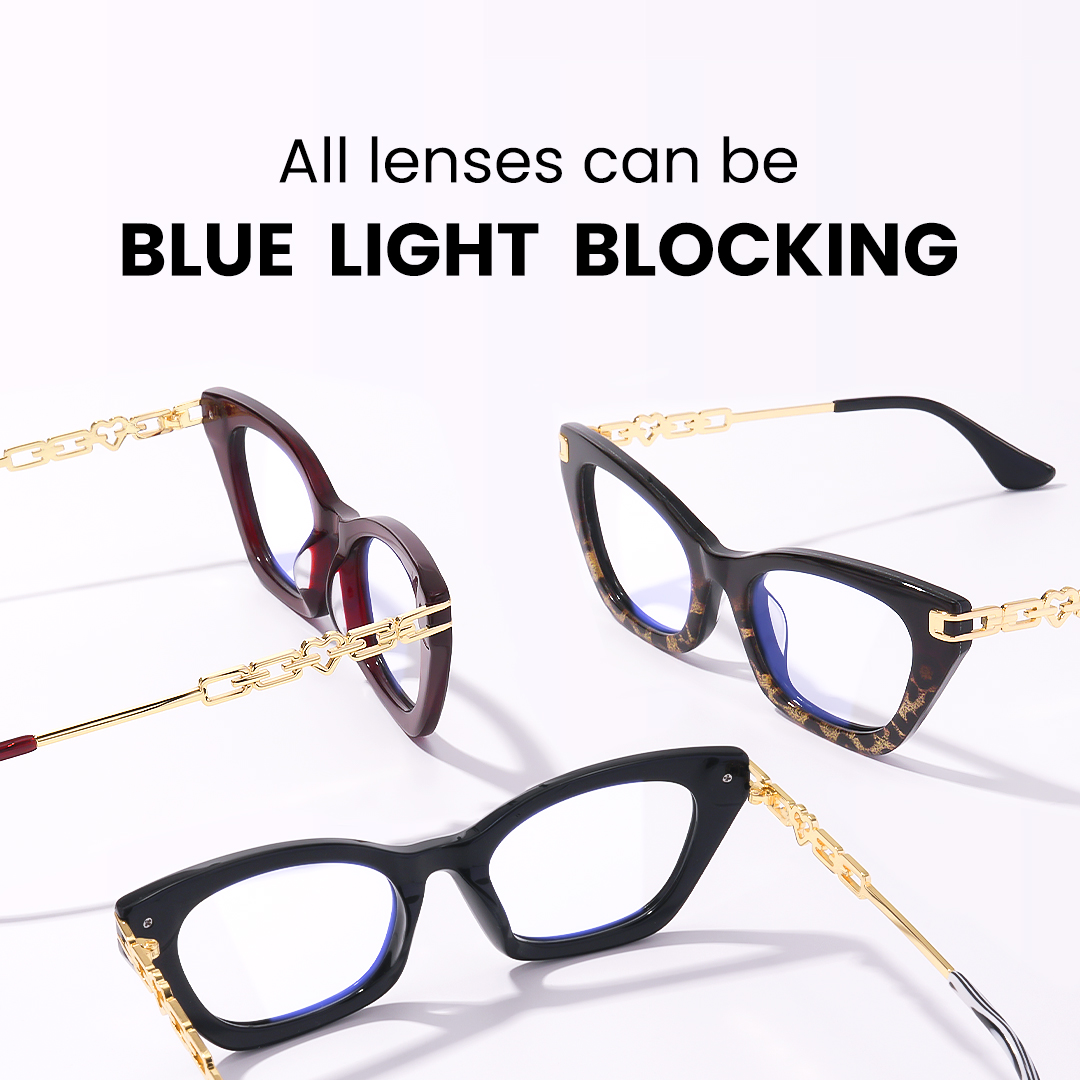
Guide to Picking Glasses That Suit Your Face Shape Perfectly
February 27,2023

What is Boho Style? A Comprehensive Guide to Boho-Chic Fashion
February 13,2025

Virtual Glasses Try On - Find Your Perfect Pair Online
April 02,2024

UV Protection Glasses VS. Blue Light Glasses - Vooglam
July 20,2023

Newest Style Modern Trendy Mens Glasses | Vooglam
March 01,2024

Stylish Reading Glasses: Blending Fashion with Functionality
February 16,2023

What are photochromic lenses & glasses?
September 22,2023

Brown Eyes: The Beauty of the Most Common Hue
September 01,2024

The chubby face glasses for round face female
August 02,2023

What are prisms in eyeglasses?
March 20,2023

What Are Bifocal Glasses? The Complete Guide (Types, History & Benefits)
April 14,2023

How to Read Your Eyeglass Prescription?
March 11,2023
Why Do My Eyes Hurt? Common Causes, Treatments, and When to See a Doctor
A lot of people have had eye pain at some point in their lives. It could be an indication of anything that isn't too serious or something that needs medical treatment, whether it's slight discomfort or intense agony. The first step to getting better and avoiding more problems is to figure out why your eyes suffer. We will talk about the most common reasons for eye pain, how to ease it at home, when to see a doctor, and how to keep your eyes safe in the future in this post.
Understanding Eye Pain
People often complain about eye pain, which can be anything from slight discomfort to intense, severe pain. There could be a number of reasons for it, ranging from simple things like being tired to more serious health problems. For a lot of people, the pain could be caused by digital eye strain or dry eyes, but it could also be a sign of a medical problem that needs to be treated. This article will help you figure out what might be causing your eye discomfort and provide you tips on how to ease it and when to consult a doctor.
Common Everyday Causes of Eye Pain
Eye pain often arises from simple, everyday factors that many people overlook. These can include:
Digital Eye Strain
With the rise of screens in our daily lives—be it for work, entertainment, or social interaction—digital eye strain has become a prevalent issue. Prolonged exposure to digital screens can lead to Computer Vision Syndrome (CVS), a condition characterized by dry, irritated eyes, blurred vision, and headaches. The constant focus on screens can strain the muscles around your eyes, causing discomfort.
Dry Eyes
Dry eyes are another frequent cause of eye discomfort. This can occur due to environmental factors such as air conditioning, heating, or prolonged screen use. Dry eyes may feel gritty or uncomfortable, especially if you wear contact lenses. The lack of sufficient tears to lubricate the eyes leads to irritation and can sometimes result in burning sensations or blurred vision.
Eye Fatigue or Overuse
Not giving your eyes regular breaks can also lead to eye pain. Whether you're reading for long periods, focusing on a screen, or engaging in activities that require intense focus, eye fatigue is common. Overuse without breaks strains the eye muscles, leading to pain or discomfort. This is often accompanied by a feeling of heaviness in the eyes.
Mild Irritation from Environmental Factors
Wind, smoke, and allergies can also make your eyes feel bad. When you're outside, being around these things can make your eyes feel irritated, itching, or watery. Allergies that happen at certain times of the year can make your eyes hurt, as well as other symptoms like a runny nose or sneezing.
Underlying Medical Conditions That Cause Eye Pain
In some cases, eye pain may be linked to more serious medical conditions that require prompt attention. If you're experiencing persistent or severe eye pain, it's essential to consider the possibility of underlying health issues.
Conjunctivitis (Pink Eye)
Conjunctivitis, commonly known as pink eye, is an infection or inflammation of the conjunctiva, the thin, clear tissue covering the white part of the eye. This condition often leads to eye pain, redness, and irritation. Bacteria, viruses, or allergies can cause pink eye. The discomfort is usually accompanied by discharge and swelling of the eyelids.
Learn more about pink eye symptoms.
Sinus Infections
A sinus infection can also cause eye pain, particularly behind the eyes. Sinus pressure often results from swelling in the sinuses, which are located near the eyes. When these areas become inflamed, the pressure can lead to a dull ache or sharp pain that can be mistaken for a more serious eye condition.
Uveitis and Iritis
Uveitis and iritis refer to inflammation in the middle layer of the eye (the uvea) or the iris (the colored part of the eye). These conditions can cause eye pain, sensitivity to light, and blurred vision. Uveitis and iritis may be associated with autoimmune diseases, infections, or trauma to the eye, and they require immediate medical attention.
Corneal Abrasions or Foreign Objects
A scratched cornea (corneal abrasion) or the presence of a foreign object in the eye can cause intense pain. If a foreign body, such as dust, sand, or an eyelash, gets lodged in your eye, it can lead to sharp discomfort and a feeling of something being "in the eye."
Glaucoma
Glaucoma is a serious eye condition that can cause severe pain, especially if it develops rapidly. Acute angle-closure glaucoma, in particular, causes intense eye pain, blurred vision, and nausea. It occurs when the pressure inside the eye increases suddenly, and it requires urgent treatment to prevent permanent vision loss.
Symptoms to Pay Attention To
While mild discomfort can often be treated at home, specific symptoms indicate that you should seek professional care. Watch for these signs:
Burning, Itching, or Gritty Sensation
If your eyes feel gritty, like there's sand in them, or if they itch or burn all the time, you can have dry eyes or an infection like conjunctivitis. These symptoms might be annoying, but they could also mean something worse is going on.
Sharp or Stabbing Pain
If you get sharp or stabbing pain in your eyes, you should see a doctor. Corneal abrasions, foreign objects, or acute disorders like glaucoma or uveitis can cause this kind of pain. If the pain comes on suddenly and is very bad, get medical care right away.
Redness, Tearing, or Blurry Vision
Redness and tearing are common signs of irritation or infection. Still, when they occur alongside blurry vision, it could indicate a more serious issue, such as uveitis, a corneal injury, or an eye infection.
Pain Behind the Eyes or Sensitivity to Light
Sinus infections, uveitis, or migraines can cause pain behind the eyes or make you more sensitive to light (photophobia). An eye doctor has to look into these symptoms more closely.
When Pain Is Accompanied by Headache, Nausea, or Halo Vision
If eye pain is accompanied by a headache, nausea, or seeing halos around lights, this could be a sign of acute angle-closure glaucoma. This is a medical emergency and requires immediate attention.
How to Relieve Eye Pain at Home
While some forms of eye pain require professional care, there are several remedies you can try at home to relieve discomfort:
The 20-20-20 Rule and Screen Breaks
If your eye pain is due to digital eye strain, following the 20-20-20 rule can help. Every 20 minutes, take a 20-second break and look at something 20 feet away. This simple practice can help reduce the strain on your eyes from prolonged screen use.
Using Artificial Tears or Lubricating Drops
For dry eyes or mild irritation, using artificial tears or lubricating eye drops can provide immediate relief. These products can help restore moisture to the eyes and ease discomfort.
Cold Compresses for Irritation
If your eyes are irritated from allergens, smoke, or wind, applying a cold compress can help soothe the pain. A cool washcloth placed over closed eyes for a few minutes can reduce swelling and relieve discomfort.
Proper Contact Lens Hygiene
If you wear contact lenses, ensuring they are clean and free of bacteria is crucial. Wearing dirty or old lenses can cause eye pain. Regular cleaning and using fresh lenses as needed can help prevent irritation.
Humidifiers for Dry Environments
If your eyes become dry due to indoor heating or air conditioning, using a humidifier can add moisture to the air and help prevent dryness and irritation.
When to See an Eye Doctor
While many cases of eye discomfort can be treated at home, there are times when you should seek professional help. If you experience any of the following, it's time to visit an eye doctor:
Sudden, Severe, or Persistent Pain
If you experience sudden, intense eye pain that doesn’t subside, or if the pain becomes increasingly severe, it could indicate a serious condition like glaucoma or uveitis that requires immediate treatment.
Visual Changes, Flashes, Floaters, or Dark Spots
If you notice changes in your vision, such as flashes of light, floaters, or dark spots, this could be a sign of retinal problems or other severe conditions that require urgent medical attention.
Eye Trauma or Exposure to Chemicals
If you've had trauma to your eye or been exposed to chemicals, it's essential to see an eye doctor right away. Chemicals can cause severe damage to the eye, and trauma can result in permanent vision loss if not treated quickly.
Pain with Fever or Immune Symptoms
If your eye pain is accompanied by fever, swelling, or other immune symptoms, it could be a sign of an infection or an autoimmune condition. Don’t delay in seeking medical care.
Preventing Future Eye Pain
While some causes of eye pain are unavoidable, there are several steps you can take to protect your eyes and reduce the risk of future discomfort:
Regular Eye Exams
Routine eye exams are essential for catching potential problems early. Your eye doctor can help monitor your eye health and provide recommendations for protecting your vision.
Blue Light Filtering Lenses for Digital Use
If you spend a lot of time in front of screens, consider investing in blue light filtering glasses to reduce eye strain from digital devices. These glasses can help alleviate discomfort caused by prolonged screen time.
Explore blue light glasses to ease digital strain
UV-Protective Sunglasses Outdoors
Protecting your eyes from harmful UV rays is essential for long-term eye health. Wearing sunglasses that block UV rays can help prevent damage and discomfort caused by sunlight exposure.
Managing Allergies and Hydration
Dry air and allergens can also make your eyes feel bad. Taking medicine for allergies, avoiding things that make them worse, and drinking enough water can all help keep your eyes pleasant.
In conclusion, eye pain might be modest and go away on its own or be a sign of a more serious problem. You can protect your eyes and keep them healthy by learning what makes them hurt and when to see a doctor.

Vooglam Blog
Vooglam blog shares professional knowledge about eyeglass frames, lenses, etc., and provides help when purchasing and using eyewear products. At the same time, Vooglam focuses on fashion glasses to interpret the trend of glasses for you.

From Mocha Mousse to Cloud Dancer: The "Soft Power" Palette of 2025-2026
The fashion world is currently taking a deep breath. After years of neon dopamine dressing and chaotic prints, the collective mood is shifting toward something quieter, yet infinitely more powerful. W
December 26,2025
The Science of Polarized Lenses: How They Improve Clarity and Safety in Snowy Conditions
If you've ever been out on a sunny day in the snow, chances are you know all about snow glare. That painful, sometimes blinding reflection off the bright white of snow isn't just annoying; it can be e
November 26,2025
Don't Spook Your Style: 6 Iconic Halloween Costumes with Glasses
Halloween isn't just about jumping into someone else's skin for a night—it's about finding pieces of yourself you didn't know existed. For those of us who wear glasses daily, the question isn't whethe
October 16,2025
How to Fix a Metal Glasses Arm Hinge: A Step-by-Step Repair Guide
Why Hinge Repairs Are Common—and FixableIf you wear glasses daily, chances are you've dealt with issues related to the hinges on your metal frames. It's one of the most common weak points, and over ti
July 07,2025











